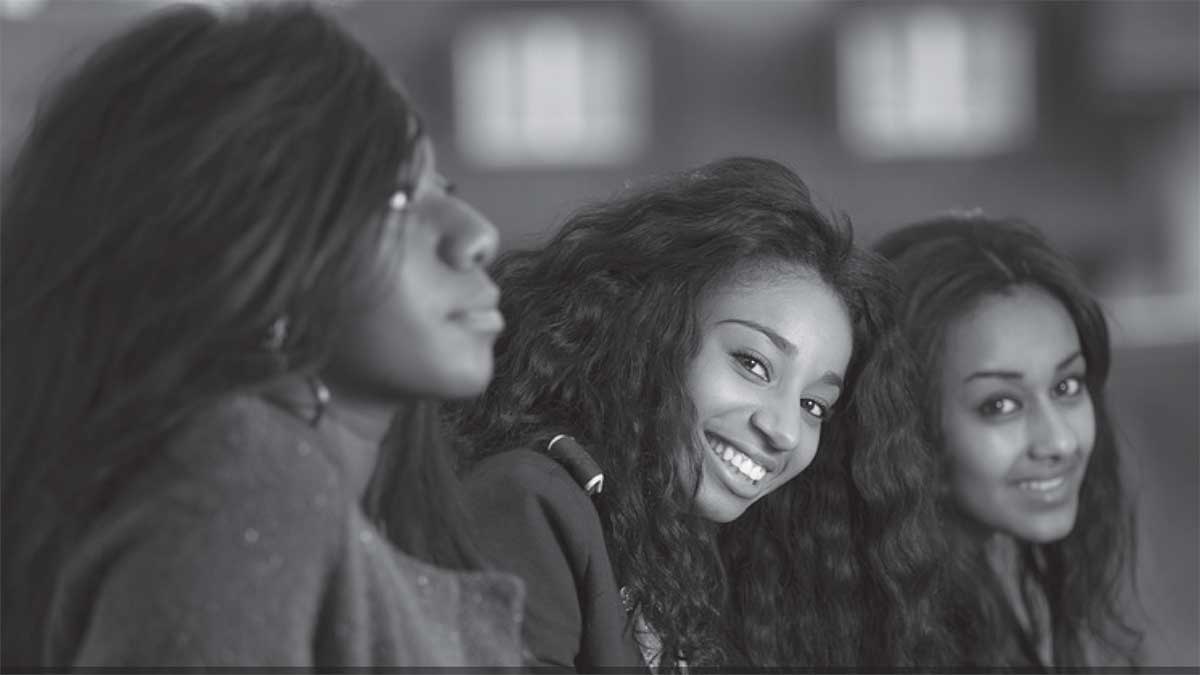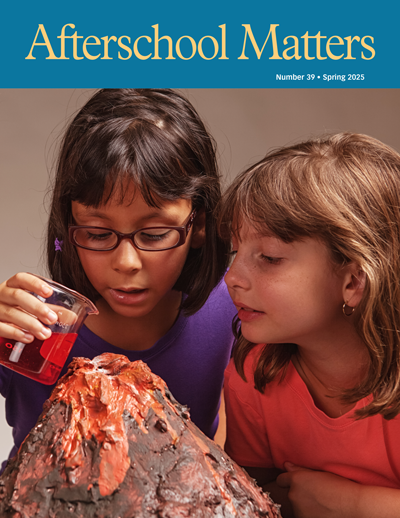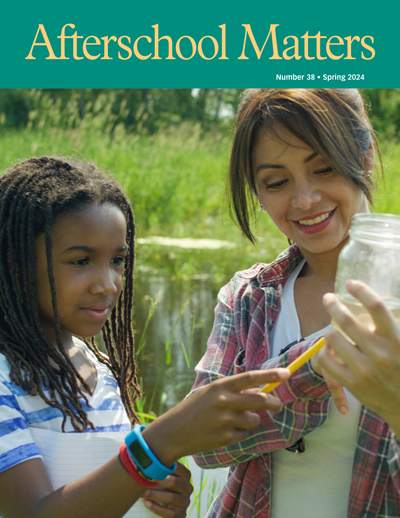A Seat at the Table: Listening to Adolescent Black Girls
By Abigail Amoako Kayser, Annalee Jackson, and Brian Kayser
 Despite having many identified strengths, adolescent Black girls in the U.S. have historically fared poorly (Crenshaw, Ocen, & Nanda, 2015). Research indicates that, compared to their Latina and White counterparts, adolescent Black girls carry a higher risk for suffering poor physical and mental health, enduring violence, and dealing with other factors associated with living in poverty (Eccles & Gootman,2002).
Despite having many identified strengths, adolescent Black girls in the U.S. have historically fared poorly (Crenshaw, Ocen, & Nanda, 2015). Research indicates that, compared to their Latina and White counterparts, adolescent Black girls carry a higher risk for suffering poor physical and mental health, enduring violence, and dealing with other factors associated with living in poverty (Eccles & Gootman,2002).
In schools, many teachers perceive Black girls as loud, aggressive, and uncultured; they may see the need to silence and tame these girls (Fordham, 1993; Grant, 1984). Because of these perceptions, Black girls often are subject to more and harsher disciplinary actions, such as suspensions and expulsions, than White girls. These actions in turn are associated with greater involvement in the juvenile justice system, where, again, young Black women often receive more severe sentences (Crenshaw et al., 2015).
Researchers have noted that participation in organized activities such as mentoring and afterschool programs can support positive development in adolescents (Archard, 2011, 2013; Eccles & Gootman, 2002). For example, Spencer and Liang (2009) found that adolescents’ cognitive, emotional, and social growth improve with participation in mentoring programs. In the U.S. in 2011, more than 5,000 such programs served over 3 million youth (DuBois, Portillo, Rhodes, Silverthorn, & Valentine, 2011).
Both mentoring programs and research on how they create successful outcomes for adolescents are abundant. However, little is known about the processes that foster positive development specifically in adolescent Black girls from low-income backgrounds (Kirshner & Ginwright, 2012). Scholars (Larson & Ngo, 2017; Simpkins, Riggs, Ngo, Ettekal, & Okamoto, 2017) have called for investigation into how the cultural assets of adolescents of color contribute to their positive development and into the ways in which race, ethnicity, and culture influence this development.
Our research responds to this call by examining mentoring programs situated in a community that has an abundance of programs for adolescent Black girls. We conducted in-depth interviews with adolescent Black girls, parents, program leaders and staff, and mentors to learn—from the people most deeply involved—what Black girls need to succeed. Three themes emerged from these interviews: that programs for adolescent Black girls need to involve families, that the girls themselves need advocates who will teach them to advocate for themselves, and that mentors should share the girls’ racial identity.
Positive Youth Development and Adolescent Black Girls
The positive youth development approach (Lerner et al., 2005; Lerner, Dowling, & Anderson, 2003) operates under the assumption that, given the right opportunities, adolescents can succeed, no matter their background.
Researchers have listed various characteristics that lead to positive youth development. Our research was particularly informed by the concept of agency as a factor in the development of adolescent Black girls. Larson (2000) describes agency as the freedom to set goals and to take steps to achieve those goals. He notes that, in order to accomplish their goals, adolescents need to develop competencies. Eccles and Gootman (2002) speak of a related concept, autonomy, which young people develop through “enabling, responsibility granting, and meaningful challenge” (p. 90). The authors posit that, rather than being “something adults do to young people,” positive youth development is “something that young people do for themselves” with help from the adults in their lives (p. 103). Connecting autonomy with agency, Eccles and Gootman note that young people are “agents of their own development” (p. 103).
Our research highlights the need for out-of-school time mentoring programs to help adolescent Black girls develop agency. The ability to self-advocate is a vital skill that can empower adolescent Black girls to understand themselves and their needs and to seek out people and resources that can help them meet those needs. Jones (2015) noted that Black girls have the potential to overcome the challenges they face if they have “fewer spokes-people and more servant-leaders [or advocates], those who model leadership and rise above by working in the trenches” (p. 279).
This understanding aligns with the asset-based concept of youth organizing, which suggests that youth of color from marginalized communities can be empowered to identify problems in their communities and take steps to address them (Ginwright, 2010). In addition to developing agency in youth, Eccles and Gootman (2002) suggest that community programs must work to integrate the various aspects of adolescents’ lives and to foster meaningful conversations among the people who care about them. They call for a constant flow of conversations among families, schools, and communities on how the needs of adolescents are or are not being met (Eccles & Gootman, 2002).
Researchers including Simpkins and colleagues (2017) have pointed out that positive youth development in afterschool depends on programming that is responsive to the developing ethnic, racial, and cultural practices of the adolescents they serve. Larson and Ngo (2017) add that a culturally responsive approach gives voice to adolescents and their families by creating opportunities to respond to issues that affect them. This finding is consistent with research showing that youth voice is a significant asset in youth development (Mitra, 2004; Serido, Borden, & Perkins, 2011). Sanders and colleagues point out that providing opportunities for youth from vulnerable communities to develop agency is key to their development (Sanders, Munford, Thimasarn-Anwar, Liebenberg, & Ungar, 2015).
Our research asked stakeholders “on the ground,” especially adolescent Black girls themselves, about ways in which agency and autonomy, family involvement, cultural responsiveness, and youth voice were embodied in their afterschool mentoring programs.
Methods
Our study focused on how stakeholders, including the girls themselves, perceived the needs of adolescent Black girls in afterschool mentoring programs. We also examined the ways in which families, schools, and community members were collaborating to foster the positive development of these girls. We chose a qualitative research method because qualitative methods are appropriate when researchers seek to understand the processes that participants experience in a specific context (Maxwell, 2005). We sought the accounts of many stakeholders, including adolescent Black girls, program leaders, parents, and mentors, in order to correlate results.
With qualitative methods, researcher bias is always a possibility, particularly when, as in the case of our research, one of the researchers was a mentor in one of the programs being investigated. We were aware of this potential in our data collection and analysis, so, to begin with, the researcher who was a mentor did not interview participants from that program. Also, to ensure that our biases did not affect our data analysis, we employed a peer debriefer (Lincoln & Guba, 1985), who provided feedback and ensured that interpretation of the data was done in a highly self-reflective manner.
Participants
We collected data during the 2016–2017 school year from a convenience sample of 26 people who were involved in one way or another with community or school-based mentorship or afterschool programs in a college town in the southeastern U.S. To recruit participants, we posted flyers in the program offices; individuals who responded to the flyers were selected for this study. The sample included 16 adolescent Black girls, ranging in age from 12 to 18, who participated in one or more of the programs. We had 10 adult participants, four males and six females; six were Black and four were White. Seven of the adults were program leaders or staff. Two of these were also mothers of three of the adolescents interviewed. Three adults were mentors who were students in the local university, two White males and one White female.
Data Collection and Analysis
We conducted semi-structured individual and focus group interviews with the 26 informants to learn about the perceived needs of Black girls in the mentoring programs. Before beginning data collection, we obtained assent from all participants and parental consent for adolescent participants. Semi-structured interviews of adult respondents, which lasted 20 to 50 minutes, were conducted in locations of the interviewees’ choice or by phone. Four adolescent focus group interviews, conducted at a neighborhood community center with a mentoring program, lasted about 50 minutes each. We developed interview protocols based on the literature; the protocols were open-ended so that we could ask follow-up questions based on participants’ responses. All interviews were recorded and later transcribed for data analysis.
Interview and focus group transcriptions were uploaded into NVivo software, which facilitates qualitative data analysis. Using Erickson’s (1986) method of analytic induction, two researchers independently read the interview transcripts, noted emerging themes, and selected excerpts that corresponded to the emerging themes. The researchers then reread the selected excerpts and reviewed the emerging themes together to clarify and resolve any discrepancies in the excerpts selected. Once emerging themes were identified, the researchers developed working assertions as answers to our research questions. After forming assertions, the two researchers sought evidence from the data to either confirm or question each assertion. Assertions that did not have ample evidence were excluded from the findings.
Findings on the Needs of Adolescent Black Girls
- In interviews and focus groups, respondents identified three main needs:
- Programs need to develop partnerships with parents and families.
- Adolescent Black girls need adults who will both advocate for them and teach them how to advocate for themselves.
- Adolescent Black girls need mentors who share their racial identity.
Need for Family Partnerships
One characteristic of programs that foster positive youth development is communication among families, schools, and communities (Eccles & Gootman, 2002). When parents and caregivers are included in conversations about the development of their adolescent children, they can accurately identify issues that affect those children (Larson & Ngo, 2017).
Our study did not find evidence of such communication and integration among the local programs that worked with adolescent Black girls. However, five of the program leaders and staff wanted to see more parental participation. For example, one program leader said:
There have been efforts to involve more of the parent perspective, but I think there is more room for that. I don’t know what that would look like exactly, but I think that is probably a space where there is more work that could be done.
This leader was saying that the program had attempted to engage parents, though he did not specify what the program would have expected of them. Another program leader, who was also the mother of two program participants, shared her perspectives on how parents could be encouraged to participate in the program:
You almost have to look at it like, “I’m not only going to educate the young person about this program and opportunity but also make a commitment and a need to work on the buy-in from the parent’s end.” Because what we’re talking about are creating opportunities to improve our quality of life for the future, and the parents have to be a part of that process—and we can’t leave them out of the equation.
Eccles and Gootman (2002) point out that organized programs for adolescents must not only integrate families, schools, and community but also be culturally responsive. In many of these programs, family involvement could be one way to promote cultural responsiveness, particularly in light of the fact that the college mentors had different lived experiences from those of the adolescent Black girls with whom they worked.
Need for Advocacy
Proponents of the theory of positive youth development suggest that adolescents must have opportunities to develop agency in decisions about their lives (Eccles & Gootman, 2002; Larson, 2000). One way this characteristic can manifest in afterschool programming is by enabling youth to use their voice as a strength in their development (Mitra, 2004; Serido et al., 2011). In our data, 11 adolescent girls and four program staff spoke about the need for advocacy in afterschool programs that support youth development. One adolescent participant described an advocate as “someone who speaks up for other people and goes to the meetings and does the research just to make sure we are exposed to things … like a middle person trying to get the resources for us.”
Similarly, a leader of a college readiness program defined advocacy as:
Working with young people … to increase opportunities for exposure and accessibility—accessibility to the arts, for example—to help them with understanding relevance as it relates to literature in the classroom [and] exposure to a college campus so they can make more realistic decisions about their future.
This respondent, while emphasizing that young people need to be aware of available opportunities, also noted that they need to use that knowledge to make informed decisions about their own lives.
In addition to wanting to expose youth to opportunities, the two respondents who were both parents and program leaders expressed the need for adolescent Black girls to advocate for themselves. In an interview, one of them said: “We as a people, whether you’re a Black woman or a Black male, if we don’t learn in 2016 how to advocate for ourselves going forward, we’re done. We’re toast.”
Many participants used the words advocacy and mentoring in their discussion of the perceived needs of adolescent Black girls. One Black program leader distinguished advocacy from mentoring by explaining how she engaged in both: “I have to advocate for them within their school divisions, but I have to mentor them when they’re here to teach them how to advocate for themselves if I’m not there.”
This idea of supporting Black girls but also teaching them to advocate for themselves was a common thread among both adult interviewees and adolescents. For example, two ninth-grade students said that they needed opportunities to advocate for themselves. One student said, “It’s like I want to do more, and I need to have the tools to do it. I just need to connect with the right people for what I want to do.” The second student went on to articulate the specific kinds of support she and her peers needed: “It needs to be advocacy, and we need to be advocates for ourselves, health, our education, to be leaders…. We have got to learn how to advocate for ourselves.”
These respondents saw advocacy as a path to helping adolescent girls develop agency. Respondents may have seen agency in afterschool programming as a way to elevate the adolescents’ voices, so that they could be heard by the people in their communities who sought to support them in their development. Also, the girls could share the aspects of their lives that were important to them, thus providing insights that could help the adults who worked with them to be more culturally responsive to their experiences.
Need for Mentors of the Same Race
Deutsch, Lawrence, and Henneberger (2014) noted a mismatch between mentors and their protégés in terms of their racial, ethnic, and class backgrounds. Liang and Grossman (2007) showed that, when mentors come from the same marginalized groups as their protégés, a stronger relationship can develop.
In our study, all three White mentors and 12 of the Black adolescent girls indicated that mentors should share their mentees’ racial identity. One of the White college mentors stated:
Most of the [college students] are White, and there are a lot more males [as mentors] than females. But then when we go to the schools, most of the kids are minority, African American or Hispanic. It’s a good mix when you put the two together, but when you separate them, everyone in the [mentoring program] is one thing, and everyone in the schools is another
This college mentor recognized the racial differences between the college students and the adolescents with whom they worked. Through he did not explicitly reflect on the differences in the two groups’ experiences, he seemed to perceive the difference as an area that should be addressed. Another White male college mentor noted the need for adolescents to have mentors who share their racial identity: “We are definitely missing the perspective, maybe, specifically, of young women of color. Maybe these young [students] that I’m hanging out with would benefit more from having someone there who’s an African American as opposed to a White male.”
The adolescent Black girls agreed with these college mentors, indicating that they preferred mentors whose racial identity and cultural experiences were like their own. One student expressed her preference for Black mentors, with whom she and other Black girls shared similar life experiences:
I just feel like [the African American mentoring group] is very relatable. It’s very nice to have somebody that’s going through something that you’re going to be going through in the future and tell you about the situation they’re having. We relate. Their experience might be very similar to my experience, so it’s good to have that.
Implications for Programs
Our findings suggest a need for adults to support the development of adolescent Black girls both by advocating for them and by preparing them to advocate for themselves. The program leaders and staff, mentors, and girls all indicated a need for adolescent Black girls to work with mentors who share their racial and ethnic background. Albright, Hurd, and Hussain (2017) suggest that one way to ensure that mentors reflect the race of their mentees is for programs to apply a social justice lens. This approach examines not only the power dynamics inherent in mentor-mentee relations but also the backgrounds and experiences of mentors and their mentees (Albright et al., 2017). Other researchers have similarly suggested that program leaders who work with adolescents and families from marginalized communities must take a culturally responsive lens to their work (Larson & Ngo, 2017; Simpkins et al., 2016).
One approach to cultural responsiveness is more of the kind of work we did: listening to the perspectives of adolescents and their parents. Once we have listened, then we can incorporate the visions of adolescent Black girls and their families into afterschool programming. Families bring cultural understandings and assets that outside groups cannot provide. These perspectives are vitally important to the positive development of adolescent Black girls. Future research should collect more perspectives from adolescent Black girls, their families, and their communities, exploring what programs look like when young people and their families are given a seat at the table.
For references, see PDF
Tags: Engagement, Youth Development, Gender, Special Population, Outcomes, Social Emotional, Mentoring



